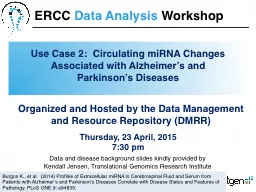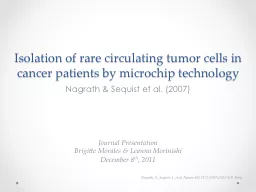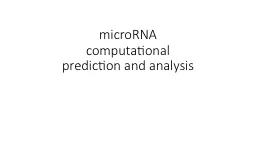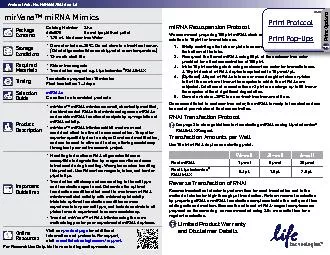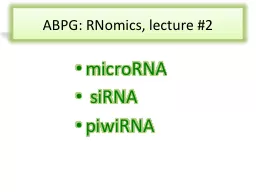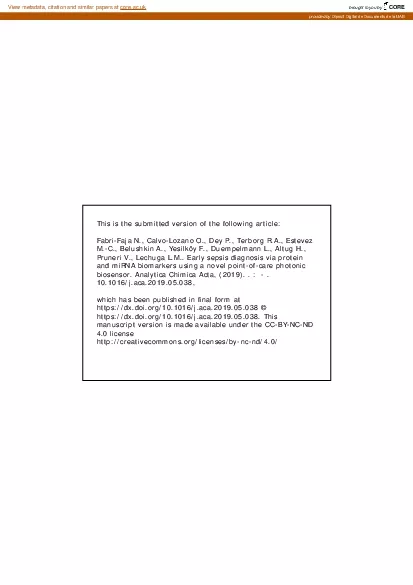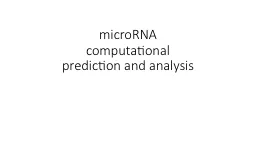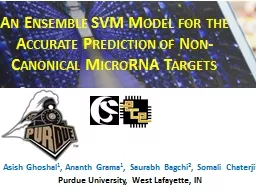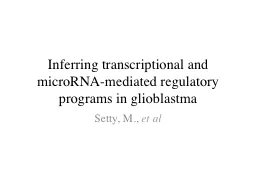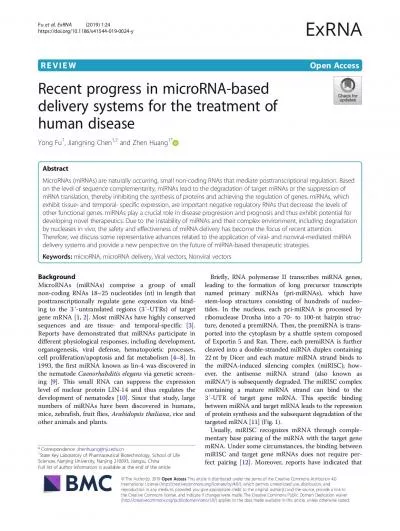PPT-Use Case 2: Circulating miRNA Changes
Author : bikersnomercy | Published Date : 2020-06-13
Associated with Alzheimers and Parkinsons Diseases Thursday 23 April 2015 730 pm Organized and Hosted by the Data Management a nd Resource Repository DMRR Data
Presentation Embed Code
Download Presentation
Download Presentation The PPT/PDF document "Use Case 2: Circulating miRNA Changes" is the property of its rightful owner. Permission is granted to download and print the materials on this website for personal, non-commercial use only, and to display it on your personal computer provided you do not modify the materials and that you retain all copyright notices contained in the materials. By downloading content from our website, you accept the terms of this agreement.
Use Case 2: Circulating miRNA Changes: Transcript
Download Rules Of Document
"Use Case 2: Circulating miRNA Changes"The content belongs to its owner. You may download and print it for personal use, without modification, and keep all copyright notices. By downloading, you agree to these terms.
Related Documents

